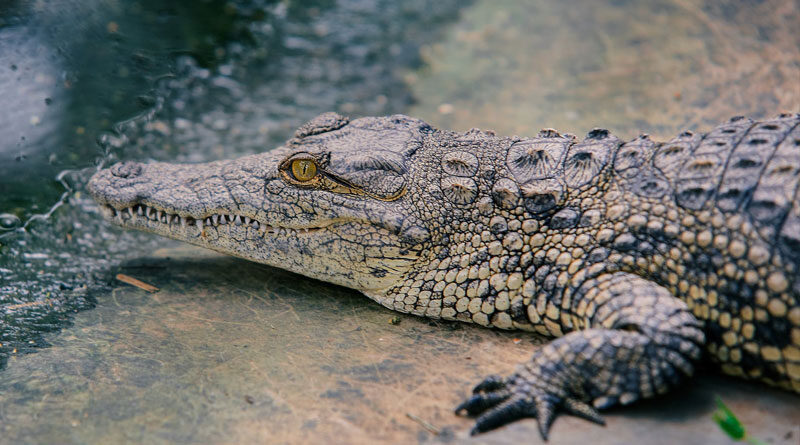Some ancient crocodiles may have chomped on plants instead of meat
Title: Some Ancient Crocodiles May Have Chomped on Plants Instead of Meat
Introduction:
When we think of crocodiles, we often picture fearsome predators lurking in rivers and swamps, ready to snatch their next meal. However, recent discoveries have shed light on a fascinating aspect of these ancient creatures: some crocodiles may have had a surprising dietary preference for plants rather than meat. This revelation challenges our understanding of crocodile behavior and raises intriguing questions about their evolution. In this article, we delve into the world of ancient crocodiles and explore the evidence suggesting that some of these formidable reptiles were more likely to feast on vegetation than on flesh.
1. Fossil evidence and dental adaptations:
Paleontologists have unearthed fossil evidence that hints at the plant-based diet of certain ancient crocodile species. The examination of fossilized teeth has revealed intriguing dental adaptations that differ from those of their carnivorous relatives. While typical crocodile teeth are designed for gripping and tearing meat, the teeth of these plant-eating crocodiles exhibit specialized features similar to those found in herbivorous animals. These adaptations suggest that they were capable of processing and consuming plant material.
2. Examination of stomach contents:
Another line of evidence comes from the examination of fossilized stomach contents preserved within the remains of ancient crocodiles. Some of these preserved stomachs contain plant matter, such as fragments of leaves, stems, and seeds. This discovery challenges the conventional notion that crocodiles were exclusively carnivorous and highlights the possibility that certain species had a more omnivorous or herbivorous diet.
3. Modern-day relatives:
To gain further insights into the dietary habits of ancient crocodiles, scientists have turned to their modern-day relatives. Among the extant crocodilian species, such as the Indian gharial and the African dwarf crocodile, there are instances of plant consumption. Although these modern crocodiles primarily feed on fish or small animals, they occasionally supplement their diet with fruits or other vegetation. This behavior suggests that their ancient counterparts may have exhibited similar dietary flexibility.
4. Environmental context:
Understanding the ecological context in which these ancient crocodiles lived can provide valuable clues about their diet. Fossilized plant remains found in close proximity to crocodile fossils indicate that these reptiles coexisted with a variety of plant life. This suggests that the availability of plant resources could have influenced the dietary preferences of certain crocodile species, especially in habitats where meat was less abundant.
5. Implications and unanswered questions:
The revelation that some ancient crocodiles may have been herbivorous or omnivorous challenges our traditional understanding of their ecological role. It raises intriguing questions about the evolutionary factors that drove these reptiles to explore different dietary niches. Did these crocodiles develop their plant-eating habits as a response to changing environmental conditions? Or did their ability to consume plants provide them with a competitive advantage in certain ecosystems? These are areas that researchers are actively investigating to unravel the mysteries of these fascinating ancient creatures.
Conclusion:
The notion that some ancient crocodiles may have preferred plants over meat invites us to reevaluate our assumptions about these formidable reptiles. Through fossil evidence, dental adaptations, examination of stomach contents, and insights from modern-day relatives, scientists are piecing together a new understanding of crocodile dietary diversity. This discovery serves as a reminder that the natural world is full of surprises, and even the most iconic and feared predators can hold hidden secrets. By delving into the ancient past, we continue to uncover fascinating aspects of Earth’s history and gain a deeper appreciation for the intricate web of life that has shaped our planet.

